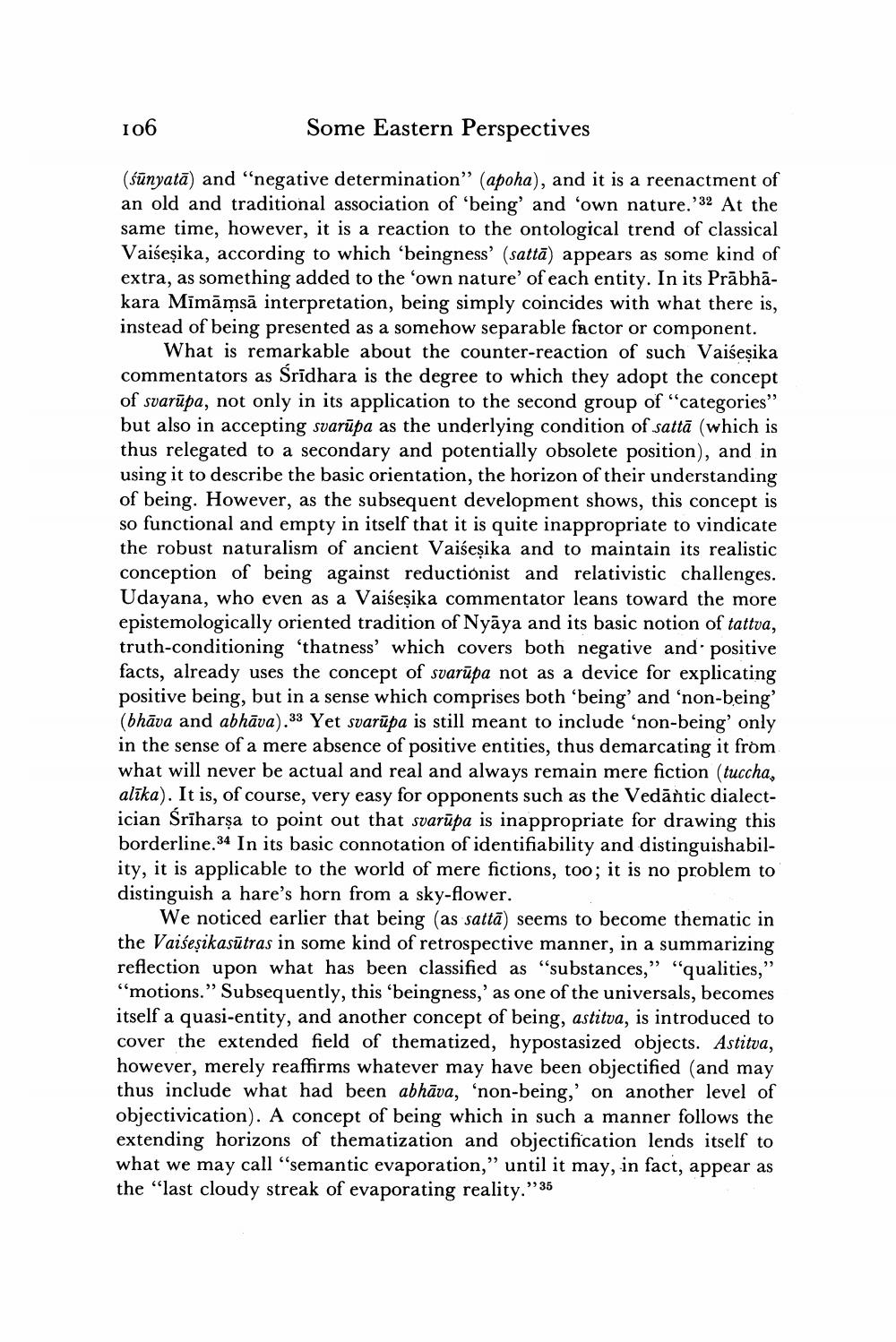________________
106
Some Eastern Perspectives
(šūnyatā) and negative determination" (apoha), and it is a reenactment of an old and traditional association of being' and 'own nature.'32 At the same time, however, it is a reaction to the ontological trend of classical Vaiseșika, according to which 'beingness' (sattā) appears as some kind of extra, as something added to the 'own nature' of each entity. In its Prābhākara Mimāmsā interpretation, being simply coincides with what there is, instead of being presented as a somehow separable factor or component.
What is remarkable about the counter-reaction of such Vaiseșika commentators as Sridhara is the degree to which they adopt the concept of svarūpa, not only in its application to the second group of "categories" but also in accepting svarūpa as the underlying condition of sattā (which is thus relegated to a secondary and potentially obsolete position), and in using it to describe the basic orientation, the horizon of their understanding of being. However, as the subsequent development shows, this concept is so functional and empty in itself that it is quite inappropriate to vindicate the robust naturalism of ancient Vaiseșika and to maintain its realistic conception of being against reductionist and relativistic challenges. Udayana, who even as a Vaiseșika commentator leans toward the more epistemologically oriented tradition of Nyāya and its basic notion of tattva, truth-conditioning 'thatness' which covers both negative and positive facts, already uses the concept of svarūpa not as a device for explicating positive being, but in a sense which comprises both being' and 'non-being' (bhāva and abhāva).33 Yet svarūpa is still meant to include 'non-being only in the sense of a mere absence of positive entities, thus demarcating it from what will never be actual and real and always remain mere fiction (tuccha, alīka). It is, of course, very easy for opponents such as the Vedāntic dialectician Śrīharsa to point out that svarūpa is inappropriate for drawing this borderline, 34 In its basic connotation of identifiability and distinguishability, it is applicable to the world of mere fictions, too; it is no problem to distinguish a hare's horn from a sky-flower.
We noticed earlier that being (as sattā) seems to become thematic in the Vaiseșikasūtras in some kind of retrospective manner, in a summarizing reflection upon what has been classified as "substances,” "qualities,” "motions." Subsequently, this beingness,' as one of the universals, becomes itself a quasi-entity, and another concept of being, astitva, is introduced to cover the extended field of thematized, hypostasized objects. Astitva, however, merely reaffirms whatever may have been objectified (and may thus include what had been abhāva, 'non-being,' on another level of objectivication). A concept of being which in such a manner follows the extending horizons of thematization and objectification lends itself to what we may call “semantic evaporation," until it may, in fact, appear as the "last cloudy streak of evaporating reality.”35




